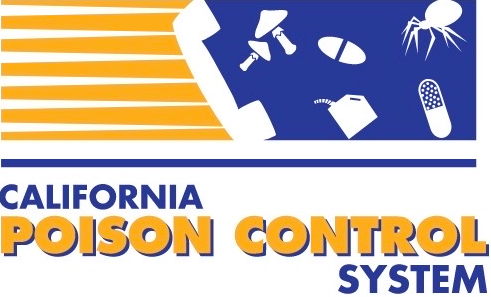by Alicia Minns, MD
Introduction
Scombroid poisoning, or histamine fish poisoning, is a type of food poisoning that is similar to symptoms of seafood allergies. The term “scombroid” derives from the type of fish (i.e. Scombridae) first implicated, such as tuna and mackerel. The first report of scombroid poisoning was published in 1830. It involved five sailors who consumed bonito fish, a member of the Scombridae family. Scombroid is associated with ingestion of dark-meat fish, such as tuna, bluefish, mahi-mahi, amber jack and mackerel. These fish contain high levels of free histidine in their muscle tissues. Scombroid results from consumption of fish containing high level of histamine, which accumulates when bacteria metabolize the amino acid histidine in the fish muscle. The enzyme histidine decarboxylase in certain bacteria such as Proteus, Klebsiella, Aerobacter and Escherichia coli produces histamine and histamine-like substances that cause the symptoms of poisoning. It is not an allergic reaction. Symptoms including rash, flushing, headache, dizziness, cramps, diarrhea, palpitations and bronchospasm.
Case presentation
A 45-year old female presents with headache, nausea, diarrhea and an erythematous blanching rash about 60 minutes after eating tuna at a restaurant. She also complained of pruritus and a restless feeling. Her face became flushed soon after her meal. Her friend who also ate tuna had similar symptoms. The patient was healthy with no medical problems. On exam, she had a temperature of 37°C, pulse 100 beats/min, respirations 20 breaths/min, blood pressure 160/82 mm Hg, and SpO2 97% on room air. She had conjunctival injection and a diffusely erythematous blanching rash on her face, neck, trunk and extremities. Her exam was otherwise unremarkable. She was treated with PO ranitidine and diphenhydramine with improvement in her symptoms. Her symptoms resolved after approximately 10 hours.
Questions
- What causes scombroid fish poisoning?
- True or false? If I order my fish to be cooked “well-done,” I cannot get scombroid fish poisoning.?
- How is scombroid best treated?
Epidemiology
Scombroid fish poisoning accounts for less than 0.5% of foodborne illnesses reported in the United States. Scombroid poisoning is common throughout the world however is infrequently reported and incorrectly diagnosed. In the United States, fewer than 100 cases are reported each year. Symptoms are very similar to an allergic reaction and this condition is often misdiagnosed as a “seafood allergy.” Tuna is the most common fish consumed, implicated in about 85% of cases.
The majority of seafood eaten in the United States is imported. In 1995, FDA established the Seafood Hazard Analysis Critical Control Point (HACCP) program to identify and prevent seafood-processing hazards that can lead to foodborne illness. HACCP regulations extend to importers and foreign suppliers, however only a small proportion of imported seafood is inspected by regulators. .
Pathophysiology and pharmacokinetics
The incubation period for scombroid is relatively short (a few minutes to a few hours). Spoilage bacteria can produce substantial amounts of histamine in fish kept at temperatures above 4°C for 3-5 hours. Histamine is formed from histidine by a decarboxylase from bacteria found in dark-meat fish. Different kinds of bacteria have been identified including Klebsiella pneumoniae, Proteus morganii, Serratia marcescens and Enterobacter intermedium. Their presence is usually secondary to contamination from handlers. Improper refrigeration and handling of captured fish is the cause of massive histamine production by the above bacteria. While negligible activation of histidine decarboxylase is measured in fish meat at low temperatures (close to 0 °C), at temperatures higher than 26 °C histamine may accumulate to toxic levels in a matter of 12 hours and even faster at higher temperatures. Up to 5 mg histamine per 100 g meat is considered normal and acceptable. A histamine concentration of 20 mg/100 g is considered to be the threshold to clinical poisoning, while levels over 100 mg/100 g are related to severe poisonings. The amount of fish eaten has been found to be related to the development of scombroid poisoning symptoms. Isoniazid and monoamine oxidase inhibitors were found to increase the risk for severe poisoning. These medications impair the metabolism of histamine by inhibiting oxidation and result in higher levels and longer duration of histamine in the body.
Histamine is a messenger molecule in the human body and thus not a natural toxin per se. It is ubiquitous in its distribution and released from mast cells, enterochromaffin-like cells, and neurons. Histamine targets a range of ‘‘histaminergic’’ receptors and its various actions are mediated by histamine receptors H1, H2, H3 and H4. Histamine has many vital functions in healthy individuals ranging from control of gastric acid secretion to neurotransmission in the central nervous system, mediation of vascular permeability and mucus secretion, immunomodulation, hematopoiesis, wound healing, and day-night rhythm. The most familiar and dramatic observable response to histamine involves the immune system and, more specifically, allergic responses.
The most effective prevention for scombroid fish poisoning is proper refrigeration of fish at <40°F (<4.4°C) at all times between catching and consumption. Sensory examination (i.e., by smell and taste) is not sufficient to detect the absence or presence of histamine; chemical testing is required. Unlike many bacterial pathogens, histamine is not destroyed when fish are frozen or cooked, making adherence to temperature requirements along all stages of the food supply chain essential.
Clinical presentation
The onset of symptoms is typically from 10 minutes to 1 hour following consumption of contaminated fish. The symptoms are variable and include headache, palpitations, dizziness, and allergic symptoms such as hives, flushing, and facial swelling. Gastrointestinal symptoms include nausea, vomiting, abdominal cramps and diarrhea. A peppery or metallic taste and oral numbness are sometimes described. Although typically benign in nature, there are case reports of more severe reactions, such as pulmonary edema and hemodynamic compromise. Histamine produces ocular effects such as conjunctival hyperemia and blurred vision. If vision loss occurs, it is transient. Histamine causes vasodilation, which involves both H1 and H2 receptors distributed throughout the resistance vessels in most vascular beds of the body. This results in lowered total peripheral resistance and blood pressure. Histamine also increased capillary permeability, which results in extravasation of lymph fluid and plasma proteins. Histamine has direct actions on the heart that affect both contractility and cardiac conduction. It increases contractility by promoting the influx of calcium ions.
Recovery is usually complete within 24 hours but in rare cases can last for days. Although there are wide variations between the sensitivities of individuals to scombroid poisoning, the majority of individuals eating the same meal will respond to scombrotoxic fish.
Diagnosis
Scombroid is a clinical diagnosis. Histamine levels can be checked on the source fish, if obtained, for confirmation. Scombroid can mimic other conditions. In addition to food allergy, severe migraine, intracranial bleeding and pheochromocytoma were other considered diagnoses. Assays of histamine and its metabolite in urine samples of scombroid fish poisoning patients showed levels up to 20 times higher than in controls. Although it supports the diagnosis, histamine measurement in common clinical practice is not recommended. Histamine levels are poorly correlated to clinical symptoms and do not affect clinical decisions.
Treatment
Treatment is symptomatic including H1 and H2 blockers. Beta agonists, epinephrine and intravenous hydration may be administered to treat any serious effects such as angioedema, wheezing or hypotension. Because scombroid poisoning is not an allergic reaction, future avoidance of the meat consumed is not necessary. Rapidity of symptom onset, mild course of poisoning and the risk of vomiting preclude the use of any gastrointestinal decontamination. Symptoms typically subside within hours even without treatment; nevertheless, histamine antagonists can shorten and promptly ameliorate the symptoms and are recommended as first-line treatment. Corticosteroids are not needed, except in the case of bronchospasm since this illness is a toxic reaction and not a true immune or allergic one.
Discussion of case questions
- What causes scombroid fish poisoning?
Answer: Scombroid is caused by accumulation of histamine in certain dark-meat fish. These fish contain high amounts of histidine in their muscle. Histamine is formed from histidine by a decarboxylase from certain bacteria that are present due to contamination from handlers. Improper refrigeration and handling of captured fish is the cause of massive histamine production and poisoning. - True or false? If I order my fish to be cooked “well-done,” I cannot get scombroid fish poisoning.
Answer: False. Histamine is not destroyed when fish are frozen or cooked. - How is scombroid best treated?
Answer: The mainstay of treatment is H1 and H2 blockers. Rarely, more aggressive therapy with beta-agonists, steroids and epinephrine are used in patients with severe symptoms



